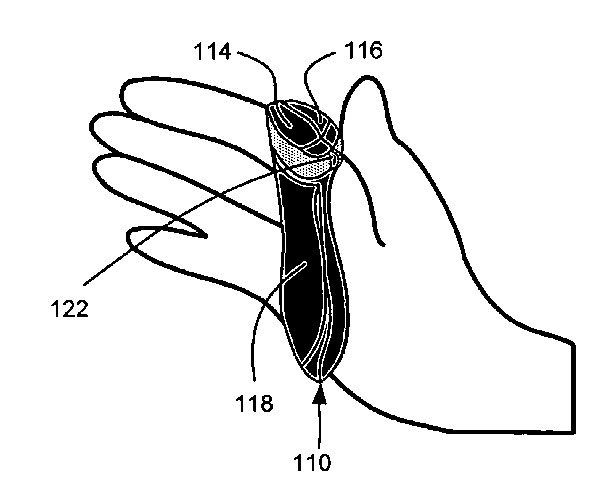Microsoft Patents a 3D Wearable Mouse
Microsoft was granted a patent describing a wearable, gyroscopic pointing device.
The idea of gyroscopic data input devices and generally mice has been around for quite some time, but has not yet resonated with users. Logitech, for example, in 2008 sold for $150its Freespace gyroscopic mouse in a traditional mouse form factor, but enabled the user to control the cursor on the screen by holding the mouse like a remote control.
Its disadvantage may have been that it was a rather inconvenient mouse to use and, at least in freespace mode, the mouse could not be used to accurately move the cursor across the screen. However, Microsoft may have felt that for those lean-back user-scenarios a gyrsocopic mouse may be useful, especially, if could be worn on a finger. A patent granted on February 28 and filed in October 2006 describes such as device. According to the document the pointing device can be switched on and off, used for gestures or for mouse-clicks and cursor movements. The patent envisioned the device to include three gyroscopic sensors and at least one accelerometer. The data transmission between the device and a host, such as a computer or game console happens via Bluetooth.
What made me scratch my head over this patent is the fact that we have had such device for quite some time. For example, back in 2007, WPI students developed a prototype of such a device. German distributor Pearl sold a wearable, wireless 3D mouse as early as 1996. Wireless and material technologies may have changed since then, but the basic usability flaw still exists: These input device aren't accurate enough to serve as a mouse replacement.
However, if you consider the Metro style user interface of Windows 8 on PCs without touchscreens, a wearable 3D mouse could be an interesting idea. Even on touchscreen PCs, a 3D mouse could be used to avoid greasy fingerprints on a screen.
Get Tom's Hardware's best news and in-depth reviews, straight to your inbox.

Douglas Perry was a freelance writer for Tom's Hardware covering semiconductors, storage technology, quantum computing, and processor power delivery. He has authored several books and is currently an editor for The Oregonian/OregonLive.
-
Distinct That looks nothing like a Wii controller.Reply
I'll give you $10 if you can come up with an arguement supporting your claims that that resembles a Wii controller.
If anything it looks like an upside down paw of a land mammal, such as a deer. -
fuzzion No inventive step here. Sadly, patent office examiners are monkeys that allow most patents to fly through unless someone contests them after publication.Reply
USPTO needs to wake up. -
sporkimus DistinctIf anything it looks like an upside down paw of a land mammal, such as a deer.Some people have a lucky rabbit's foot.Reply
M$ has a "One hoof to rule them all" deer appendage.
